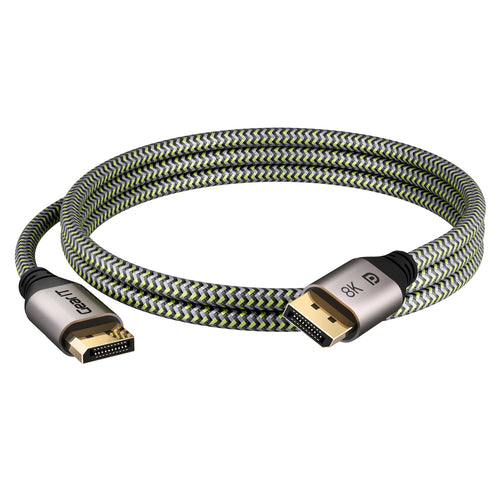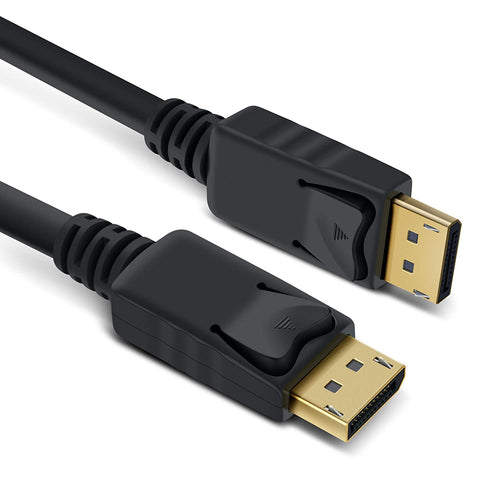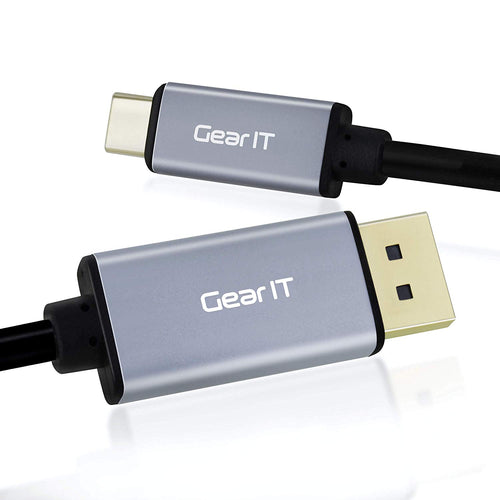
In the ever-evolving landscape of display technologies, keeping up with the latest standards can feel like a daunting task. However, understanding the capabilities of each iteration can greatly enhance your viewing experience and ensure compatibility with modern devices. Enter DisplayPort 1.4 – a versatile and powerful standard that offers a plethora of features for both consumers and professionals alike. In this article, we'll delve into everything you need to know about DisplayPort 1.4.
What is DisplayPort 1.4?
DisplayPort 1.4 is the latest iteration of the DisplayPort standard developed by the Video Electronics Standards Association (VESA). It succeeds DisplayPort 1.3 and brings several improvements in terms of bandwidth, resolution, refresh rates, and features.
Enhanced Bandwidth and Data Rate
One of the most significant upgrades in DisplayPort 1.4 is its increased bandwidth and data rate capabilities. It supports a maximum bandwidth of 32.4 Gbps, doubling the bandwidth of DisplayPort 1.2. This increase allows for higher resolutions, refresh rates, and color depths, delivering an immersive visual experience.
Support for Higher Resolutions and Refresh Rates
DisplayPort 1.4 enables support for extremely high resolutions and refresh rates, making it ideal for gaming, multimedia, and professional applications. It can handle resolutions up to 8K (7680 × 4320 pixels) at 60 Hz and 4K (3840 × 2160 pixels) at 120 Hz with full-color depth. This ensures sharp and smooth visuals, whether you're gaming, watching movies, or working on graphic-intensive tasks.
High Dynamic Range (HDR) Support
HDR has become increasingly popular in the realm of display technology due to its ability to deliver more vibrant colors, higher contrast ratios, and greater brightness levels. DisplayPort 1.4 fully supports HDR content, allowing users to enjoy lifelike visuals with enhanced realism and detail.
Display Stream Compression (DSC)
DisplayPort 1.4 introduces Display Stream Compression (DSC), a visually lossless compression algorithm that enables the transmission of high-resolution video with minimal bandwidth requirements. DSC ensures efficient utilization of available bandwidth, allowing for higher resolutions and refresh rates without compromising image quality.
Forward Error Correction (FEC)
To ensure reliable data transmission over longer cable lengths, DisplayPort 1.4 incorporates Forward Error Correction (FEC). FEC detects and corrects errors in data transmission, minimizing the likelihood of visual artifacts or signal degradation, particularly in setups utilizing longer cables or daisy-chaining multiple displays.
Multi-Stream Transport (MST) Support
DisplayPort 1.4 continues to support Multi-Stream Transport (MST), allowing users to daisy-chain multiple displays from a single DisplayPort output. This feature is particularly useful in multi-monitor setups, simplifying cable management and reducing clutter.
Compatibility & Adoption
While DisplayPort 1.4 offers numerous advancements in display technology, its widespread adoption may take time as manufacturers gradually integrate the standard into their products. However, many modern GPUs, monitors, and other display devices already support DisplayPort 1.4, ensuring compatibility with the latest hardware.
Performance & Versatility
DisplayPort 1.4 represents a significant leap forward in display technology, offering enhanced bandwidth, support for higher resolutions and refresh rates, HDR compatibility, and advanced features like Display Stream Compression and Forward Error Correction. Whether you're a gamer, content creator, or professional user, DisplayPort 1.4 provides the performance and versatility to meet your needs. As the industry continues to embrace this standard, we can expect to see even more innovative display solutions that leverage the capabilities of DisplayPort 1.4 for an unparalleled viewing experience.





















































